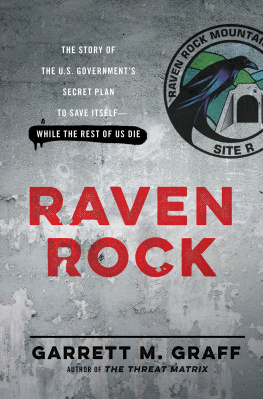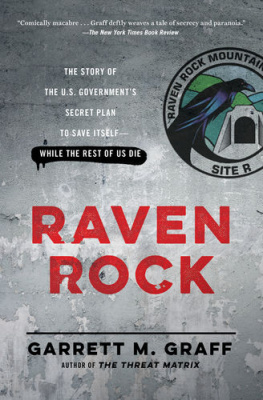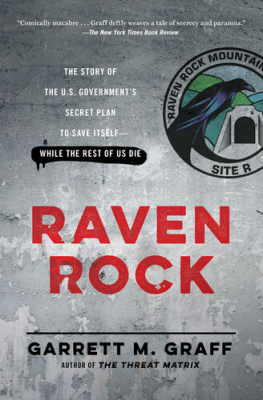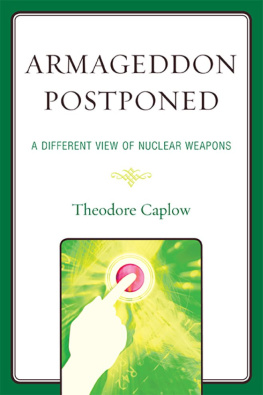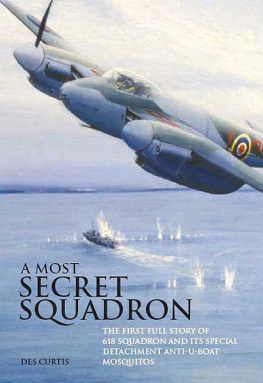ALSO BY GARRETT M. GRAFF
The Threat Matrix: The FBI at War in the Age of Global Terror
The First Campaign: Globalization, the Web, and the Race for the White House

Simon & Schuster
1230 Avenue of the Americas
New York, NY 10020
www.SimonandSchuster.com
Copyright 2017 by Garrett Graff
All rights reserved, including the right to reproduce this book or portions thereof in any form whatsoever. For information, address Simon & Schuster Subsidiary Rights Department, 1230 Avenue of the Americas, New York, NY 10020.
First Simon & Schuster hardcover edition May 2017
SIMON & SCHUSTER and colophon are registered trademarks of Simon & Schuster, Inc.
For information about special discounts for bulk purchases, please contact Simon & Schuster Special Sales at 1-866-506-1949 or .
The Simon & Schuster Speakers Bureau can bring authors to your live event. For more information or to book an event, contact the Simon & Schuster Speakers Bureau at 1-866-248-3049 or visit our website at www.simonspeakers.com.
Interior design by Ruth Lee-Mui
Jacket design by Michael Nagin
Jacket Image by Gregor Schuster/Getty Images
Author photo by Andy Duback
Library of Congress Cataloging-in-Publication Data is available.
ISBN 978-1-4767-3540-5
ISBN 978-1-4767-3545-0 (ebook)
PHOTO CREDITS
All photos are courtesy of the U.S. government unless otherwise indicated.
Insert 1:
, bottom: Courtesy of the author
Insert 2:
, top: Photo by Lutz Lehmann
To KFB, who encourages my curiosity
CONTENTS
Doomsday is near. Die all, die merrily.
Henry IV, Part 1 , Shakespeare
INTRODUCTION
For Richard Nixon, August 9, 1974, may have marked the end of his presidency, but for Dexter McIntyre, it was just another workdaya Friday like any other in a workplace unlike almost any other. He arrived early in the morning at the secret AT&T facility in Stanfield, North Carolina, entered the access code at the outer fence, parked his car in the small aboveground lot, and walked through a small door built into the hillside.
The complex had existed since 1965, when AT&T began to dig a big hole about two miles from McIntyres childhood home in Locust, North Carolina, about thirty miles east of Charlotte. He had been nineteen when construction started, and recalls, There was a lot of curiosity about what was going on there. No one really knew what the hole was foror even really who was digging. Some locals swore it was a secret facility for communicating with aliens; others believed it was a secret submarine basedespite the fact that it was about 150 miles from the ocean. The truth, as it turned out, was almost as strange as the fiction.
In 1967, McIntyre found himself reporting to work at the newly completed facility as a technician. The big hole that had so fascinated the community now contained a nuclear-hardened, department-store-sized concrete bunker, protected by twin 20,000-pound blast doors, that helped run an AT&T long line cable from Miami to Boston, skirting major metropolitan areas that might be nuclear targets. It was one of dozens of specially built facilities that ran air-to-ground communications for VIP military aircraft like Air Force One and various airborne alert command postsprograms with code names like NIGHTWATCH and LOOKING GLASS that ensured that in the event of a nuclear strike someone in America would be able to launch from the ashes a devastating retaliatory blow against the Soviet Union.
For a quarter century, one eight-hour shift at a time, McIntyre and his colleaguesall technically AT&T stafftended this hidden mountaintop redoubt, maintaining the telecommunications gear that kept the government ready, a key link in the massive Continuity of Government machine. In the event of an attack, food and rations inside could keep the staff functioning for at least thirty days. The whole facility was mounted on massive metal springs to cushion the impact of a nuclear blast. Communications gear and lights hung from springseven the toilets were mounted on springs and linked with rubber plumbing. The staff worked closely with other AT&T technicians at another North Carolina bunker in Chatham, similarly about thirty miles west of Raleigh, which served as the southernmost link in the governments massive relocation arc, a network of nearly 100 bunkers built into the mountains of Pennsylvania, Maryland, Virginia, West Virginia, and North Carolina. The Chatham facility had a special nuclear-hardened troposcatter microwave relay for post-Apocalypse communications and its own special Continuity of Government functions that not even the fellow Stanfield employees understood. Even though they all had special security clearances, the Chatham programs were, as the military said, need to know. None of the technicians even told their families what they really did. You just didnt talk about it, McIntyre recalls. What do you do? I work on telephone circuits. It wasnt an answer that encouraged follow-up questions.
As McIntyres shift began on the morning of August 9, the Stanfield Klaxon sounded, signifying that an Air Force One flight was being readied at Andrews Air Force Base in Washington. McIntyre often served as the facilitys air-to-ground communications technician, and so he closeted himself in the radio room to listen as the plane took off. His first step was to open the office safe and look up his stations daily call sign; each month, a courier delivered to Stanfield a sealed envelope with different call signs for each day of the month to make it impossible for any radio eavesdroppers to determine Air Force Ones flight path. He looked over the planes route, saw it was heading west, and knew that that day, hed play only a minor role. With a westward flight path, hed quickly hand over communications to the facility in Williamstown, Kentucky. As Air Force Colonel Ralph Albertazzie and his copilot readied for takeoff and as Air Force One passed through 10,000 feet, McIntyre in the Stanfield facility began to pick up a signal. He called in to the Waldorf, Maryland, ground communications station, Ive got acquisition of signal. I can take the flight. He tuned in to listen.
As Air Force One began to bank west, each of its thirty-four passengers watched the advancing time. Richard Nixon, in his private compartment, interrogated Sergeant Lee Simmons: Is that clock right? He gestured to the three digital clocks lining the cabin wall, a legacy that remained from Lyndon Johnsons presidency. LBJ had loved to summon staff to his cabin to tell him the time: What time was it in Washington? At their destination? Where we are right now? Finally, Air Force stewards installed a trio of clocks to provide constant answers. Now all three ticked down the final minutes of his successors presidency.
I think Id like a martini, Nixon said.
Chief Steward Chuck Palmer knew exactly how the president liked ita chilled glass filled with ice, just a hint of dry vermouth, a lemon peel twist lightly rubbed around the edge. Gin. Stirred quickly and served. Palmer had honed the technique during hundreds of hours of flight with the thirty-seventh commander-in-chief, who had visited twenty-eight countries, including the closed empire of China, traveling 137,500 miles internationally in his six years in office, more than any predecessor.
In the cockpit, copilot Les McClelland listened through headphones as a thousand miles away the chief justice and the vice president recited thirty-five words, phrase by phrase, concluding:... preserve, protect, and defend the Constitution of the United States. The clock read three minutes and twenty-five seconds past noon. The Boeing 707, its blue-and-white paint job instantly recognizable around the world, was 39,000 feet above the Missouri plains, heading west at 600 miles an hour, still nearly three hours from its California destination.
Next page

